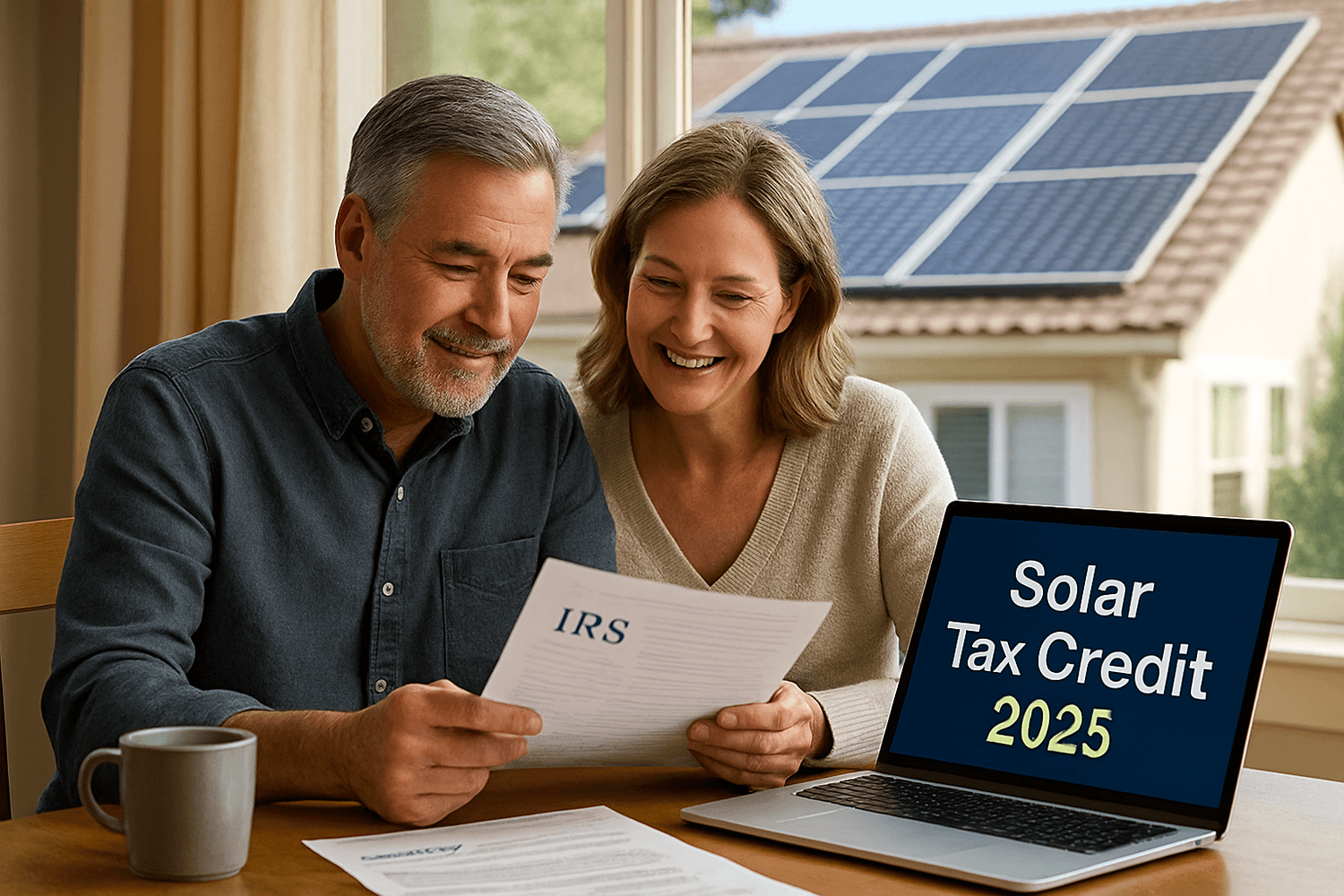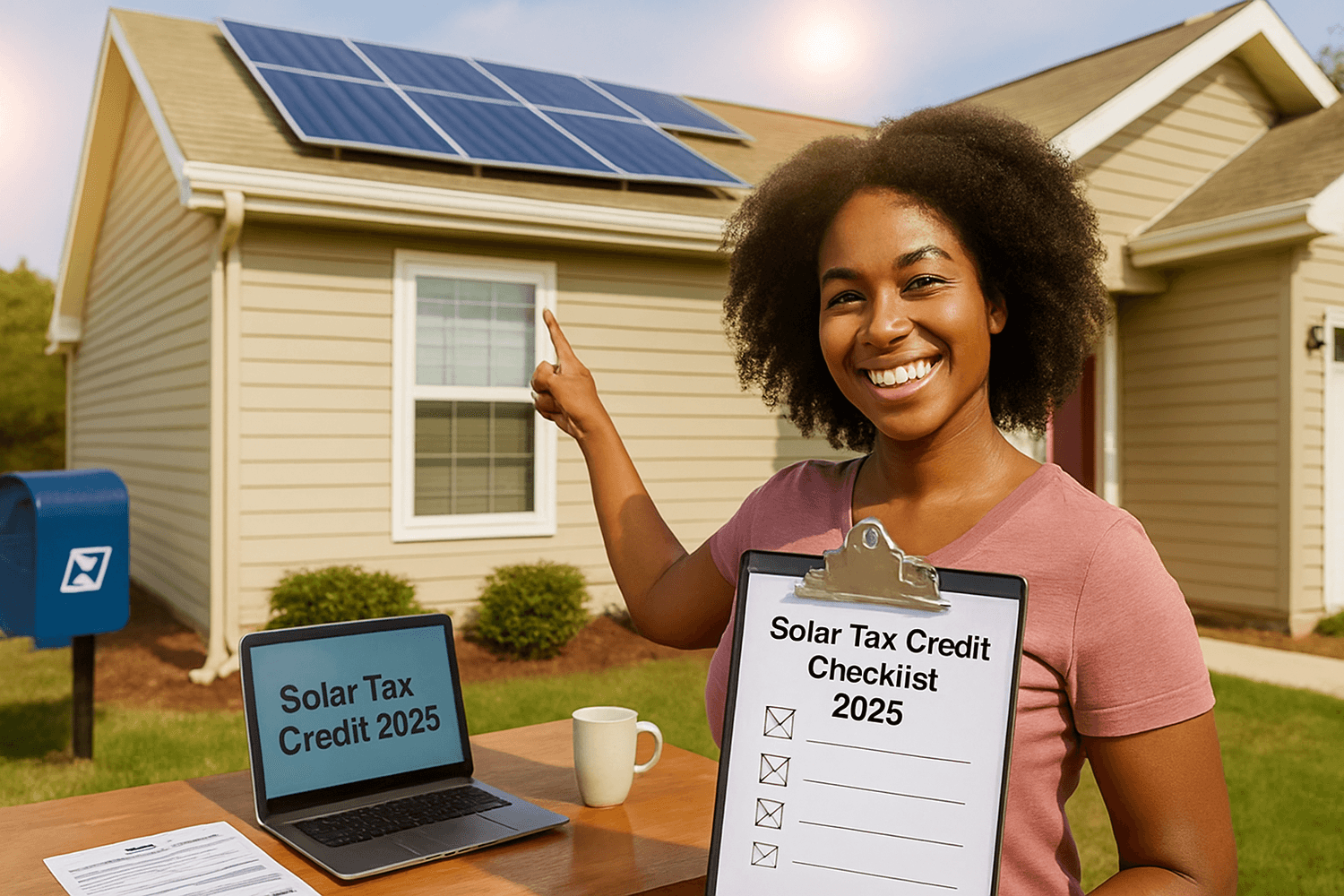Solar Tax Credit Changes in 2025: What U.S. Homeowners Need to Know
TL;DR
The 30% Residential Solar Investment Tax Credit (ITC) remains available in 2025, but will expire after December 31, 2025—with no phase-out.
Home systems must be fully installed and commissioned by year-end to qualify.
A major Republican-backed bill passed in July 2025 formally removes the credit for residential installations beyond 2025.
Commercial and utility solar projects still qualify for the 30% ITC if construction begins by July 4, 2026, or service is placed by December 31, 2027.
The “One Big Beautiful Bill” also threatens to revoke federal solar grants like the $7B Solar for All program.
What Is the Solar Investment Tax Credit (ITC)?
The Residential Clean Energy Credit, also known as Section 25D, allows U.S. homeowners to claim 30% of qualified solar project costs—including equipment and installation—as a credit on federal income tax.
Originally part of the Inflation Reduction Act (IRA), it was intended to remain at 30% through 2032 and gradually phase out through 2035.
Homeowners can carry forward unused credit amounts if their tax liability is insufficient.
What Changed in 2025
In July 2025, the “One Big Beautiful Bill” (OBBBA) legislation was signed, accelerating the expiration of residential solar tax credits. Home systems must now be installed and commissioned by December 31, 2025 to qualify—no phase-down after 2025.
For commercial projects, a new ITC timeline requires construction to begin by July 4, 2026 or they must be placed in service by December 31, 2027.
The bill has also proposed rescinding $7 billion in rooftop solar grants, including the Solar for All program, targeting low-income and tribal households.
Who Is Eligible & What Qualifies
Eligibility criteria for the 2025 ITC are consistent with previous years:
Must own your principal residence in the U.S.
Must pay federal income tax (credit is non-refundable but allows rollover).
Rented homes or leased solar systems do not qualify, except community solar arrangements.
Qualified systems include solar PV, solar water heaters, battery storage (≥ 3 kWh), wind and geothermal tech.
Savings Examples for American Homeowners
Consider these typical scenarios:
$10,000 system → $3,000 credit
$20,000 system → $6,000 credit
With average U.S. system sizes (~11 kW) costing $29,000 pre-incentive, homeowners save over $8,800.
By locking in installations in 2025, homeowners maximize ROI and reduce utility bills for decades ahead.
Important Deadlines & Checklist
Order equipment by mid-2025
Prevent price hikes due to tariffs or delays
Begin installation
Fulfill "construction start" test (certain projects)
Complete system by Dec 31, 2025
Must be installed, commissioned, and operational
Keep documentation
Permits, inspection sign-offs, receipts
Key actions:
Book your installer now—summer/fall appointments fill quickly.
Track permit and inspection dates to confirm completion.
Document everything—including final utility interconnection.

Commercial Projects & Business ITC Options
Commercial and utility-scale solar projects face a slightly extended timeline:
Projects must begin construction by July 4, 2026, or be placed in service by December 31, 2027.
The prior four-year “safe harbor” rule remains for qualifying early construction.
A Treasury executive order now tightens what counts as “construction start,” likely excluding token financial moves like deposit payments.
Recent news indicates Senate holds over Treasury nominees, signaling industry concern over OTTBA’s aggressive cutback timelines.
State-Level Incentives That Still Apply in 2025
Even as federal incentives shrink, state-level programs often remain valuable:
California: Ongoing NEM 3.0 net metering, local rebates (SGIP, CSI), plus mandates for new homes.
New York, Illinois, North Carolina: SREC or state credit programs continue supporting adoption.
Florida & Texas: While state credits are limited, rising electricity costs make solar highly attractive.
Combine these with federal ITC to reduce payback periods and boost long-term savings.
Common Misconceptions About the 2025 Changes
Myth: “The solar credit phases down gradually starting 2026.”
Truth: It ends entirely after December 31, 2025—no phase-down.
Myth: “Battery-only installations qualify.”
Truth: Batteries only qualify if installed with a solar PV system.
Myth: “Only hardware costs count.”
Truth: Labor, permitting, assembly, and wiring are eligible expenses.
Should You Install Solar in 2025—or Wait?

Why Install in 2025:
Secure the full 30% federal credit once and for all
Beat predicted price hikes from tariffs and supply chain constraints
Lock in ROI before 2026 when credit disappears
Risks to Delaying:
Increased utility rates and energy inflation
Possible installation backlogs preventing year-end completion
The current policy creates strong urgency to act now—especially in states with high solar adoption and frequent outages.
Frequently Asked Questions
Q: Is the solar tax credit refundable?
A: No. It reduces your tax bill dollar-for-dollar. Any excess can be carried forward to future years.
Q: Do rentals or leased panels qualify?
A: No, unless you're participating in community solar as an eligible subscriber.
Q: Does the ITC cover battery backups?
A: Yes—if installed alongside a solar PV system and battery capacity ≥ 3 kWh.
Q: What if my project misses the 2025 deadline?
A: Residential credits become fully unavailable after December 31, 2025. Only commercial projects may still qualify under limited windows.
Q: Can I still claim for systems installed earlier?
A: Yes—as long as they were installed and commissioned by the deadline—even if you file in 2026.
2025 is the final year for U.S. homeowners to claim the 30% federal solar tax credit. The legislation signed in July 2025 ensures that any residential solar installed after December 31, 2025 will not qualify—period.
If you’ve considered solar for your home, now is the moment to act:
Get project quotes and schedule installation
Verify installer timelines and interconnection process
Ensure all documentation supports eligibility
Thinking of going solar and want help quantifying your savings? Get our free eBook on "How to Slash Your Energy Bills with a Solar Generator (Even If You Rent)". Here!
About the author
Emayoma Abbey
Email: info@solarpawa.com
Emayoma Abbey is the founder of SolarPawa.com, a platform dedicated to empowering individuals and communities to embrace clean, reliable, and affordable solar energy. With a strong passion for solving real-world power challenges, Emayoma focuses on providing practical, easy-to-understand information that helps people take control of their energy needs.
ABOUT
SolarPawa is Nigeria's trusted online store for affordable and reliable solar energy solutions.
Created with © Emayoma Abbey
